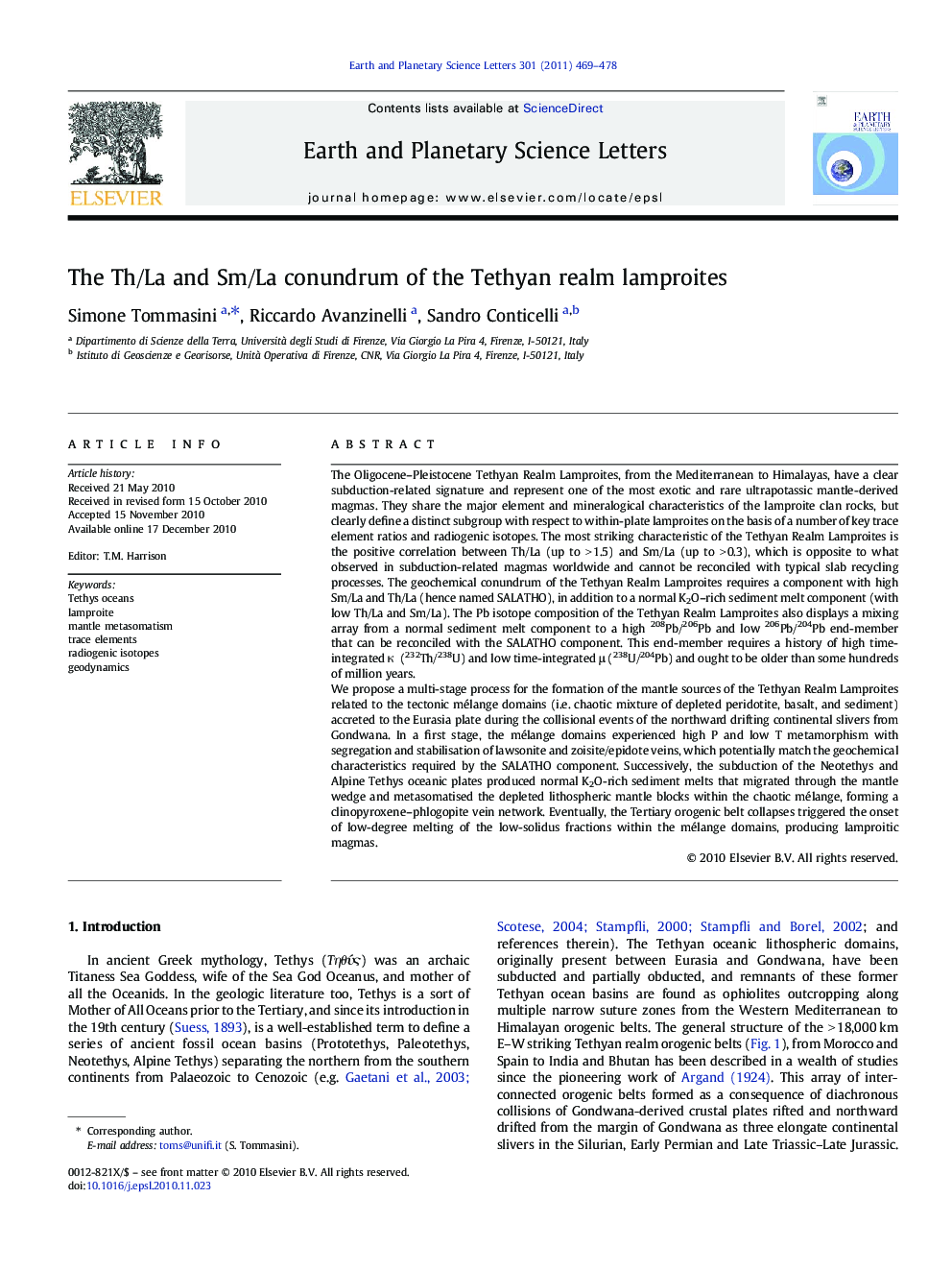| کد مقاله | کد نشریه | سال انتشار | مقاله انگلیسی | نسخه تمام متن |
|---|---|---|---|---|
| 4678180 | 1634837 | 2011 | 10 صفحه PDF | دانلود رایگان |

The Oligocene–Pleistocene Tethyan Realm Lamproites, from the Mediterranean to Himalayas, have a clear subduction-related signature and represent one of the most exotic and rare ultrapotassic mantle-derived magmas. They share the major element and mineralogical characteristics of the lamproite clan rocks, but clearly define a distinct subgroup with respect to within-plate lamproites on the basis of a number of key trace element ratios and radiogenic isotopes. The most striking characteristic of the Tethyan Realm Lamproites is the positive correlation between Th/La (up to > 1.5) and Sm/La (up to > 0.3), which is opposite to what observed in subduction-related magmas worldwide and cannot be reconciled with typical slab recycling processes. The geochemical conundrum of the Tethyan Realm Lamproites requires a component with high Sm/La and Th/La (hence named SALATHO), in addition to a normal K2O–rich sediment melt component (with low Th/La and Sm/La). The Pb isotope composition of the Tethyan Realm Lamproites also displays a mixing array from a normal sediment melt component to a high 208Pb/206Pb and low 206Pb/204Pb end-member that can be reconciled with the SALATHO component. This end-member requires a history of high time-integrated κ (232Th/238U) and low time-integrated μ (238U/204Pb) and ought to be older than some hundreds of million years.We propose a multi-stage process for the formation of the mantle sources of the Tethyan Realm Lamproites related to the tectonic mélange domains (i.e. chaotic mixture of depleted peridotite, basalt, and sediment) accreted to the Eurasia plate during the collisional events of the northward drifting continental slivers from Gondwana. In a first stage, the mélange domains experienced high P and low T metamorphism with segregation and stabilisation of lawsonite and zoisite/epidote veins, which potentially match the geochemical characteristics required by the SALATHO component. Successively, the subduction of the Neotethys and Alpine Tethys oceanic plates produced normal K2O-rich sediment melts that migrated through the mantle wedge and metasomatised the depleted lithospheric mantle blocks within the chaotic mélange, forming a clinopyroxene–phlogopite vein network. Eventually, the Tertiary orogenic belt collapses triggered the onset of low-degree melting of the low-solidus fractions within the mélange domains, producing lamproitic magmas.
Research Highlights
► The Tethyan lamproite mantle sources require recycled K2O-rich sediment components.
► The extreme Th/La vs Sm/La positive trend is however opposite to typical slab recycling processes.
► The geochemical conundrum demands for a further component with high Sm/La and Th/La.
► Pb isotopes indicate that the formation age of this component ought to be >50 Ma.
Journal: Earth and Planetary Science Letters - Volume 301, Issues 3–4, 15 January 2011, Pages 469–478